What the end of the Cambie legal saga means for public health care
Private health care financing refers to patients paying out-of-pocket or with private health insurance for necessary health care.
In Canada, the debate surrounding private health care financing for medically necessary care, such as hospital and physician services, was at issue in the constitutional challenge launched by the for-profit Cambie Surgeries Corporation in BC. Cambie Surgeries Corporation’s legal challenge to strike down key provisions of British Columbia’s Medicare Protection Act (see next section). This legislation, similar in other provinces,[1] prevents doctors who work in the public system from charging patients extra fees for care that is already covered under the public plan (“extra billing”) and charging both patients and the public plan for the same services. The BC legislation also bans the sale of private insurance that duplicates what is already publicly insured.
There is no outright ban on privately financed health care in Canada, and no federal or provincial legislation prevents doctors from working in privately financed facilities or bans patients from paying out-of-pocket for their services. However, doctors can’t work in both the public and private systems at the same time. If they choose to work entirely on a privately funded basis, they must un-enroll from their provincial health insurance plan and forego the ability to bill government for their services.
Despite differences in how jurisdictions regulate private financing, a large body of Canadian and international research evidence clearly shows that private financing increases wait times for those waiting in the public system.[2] In a comprehensive review of the experiences with private financing in OECD countries published in the Journal of Health Politics, Policy and Law, the researchers concluded that:
[P]ublic-sector waiting lists and times are longer in nations with parallel private sectors […] A parallel private sector may in fact draw resources out of the public sector and/or put in place incentives that have the effect of increasing waits in the public sector. Waiting lists for publicly financed services are likely to respond to infusions of public, not private, finance.[3]
These findings are consistent with other international studies,[4] including an evidence synthesis published in the British Medical Bulletin that found little evidence that private financing reduced public waiting times.[5]
In Canada, available evidence corroborates international findings. A prominent Manitoba study that found that wait times were longer for cataract surgery patients in the public system when surgeons worked in both publicly financed and privately financed facilities.[6] For a recent example of the effects of introducing private financing we can look to Saskatchewan’s experiment with private-pay medical resonance imaging (MRI). In 2016, Saskatchewan passed legislation allowing patients to pay privately for an MRI scans at private, for-profit clinics. For every privately paid MRI, these clinics provided an MRI scan to a patient on the public wait list.[7] Instead of decreasing, public wait lists for MRIs in the province, the public MRI waiting list doubled between 2015 and 2019. Similar to the international and Manitoba evidence, public waits in Saskatchewan likely grew longer as specialized professionals were pulled into to the private sector from the public sector.[8]
Moreover, Saskatchewan’s legislation violates the Canada Health Act by allowing wealthier patients to jump the queue and have their surgery performed sooner than someone who cannot afford to pay privately.[9] Provinces that allow private-pay medical imaging or queue-jumping will have Canada Health Transfer payments clawed back on a dollar-for-dollar basis by the federal government.[10]
In sum, the evidence shows that private health care financing does not reduce public wait times.
Timeline and key findings in the Cambie Case
A group of plaintiffs led by Dr. Brian Day, an orthopedic surgeon and vocal proponent of for-profit health care financing and delivery, unsuccessfully challenged the constitutionality of BC’s legislation that protects the province’s publicly financed health care system. In 2007, the BC government Medical Services Commission, responsible for managing the Medical Services Plan (MSP) on behalf of the BC government, informed Dr. Brian Day that his private, for-profit medical clinics (Cambie Surgery Centre and the Specialist Referral Clinic) would be audited in response to patient complaints about improper billing received by the Medical Services Commission.
Before it could conduct the audit, a group of plaintiffs led by Day (including four private clinics that withdrew from the legal action) launched a Charter challenge to try to strike down key sections of the BC Medicare Protection Act. This law protects BC’s public health care system by banning extra-billing (charging patients beyond the fees doctors are paid by the public plan) and the ban on private duplicative insurance (private insurance that covers medical services that are medically necessary care already covered by the public insurance plan).[11] Despite efforts by the plaintiffs to block the audit,[12] Day’s clinics were audited in 2011 with “limited cooperation from the President [Brian Day], management, and staff.”[13]
The 2012 BC government audit report found extensive unlawful billing by Day’s clinics: “[N]ot only were patients unlawfully charged for insured health care services at the Cambie Surgery Centre and Specialist Referral Clinic, but physicians in the clinics were doing so with the benefit of a very substantial public subsidy by submitting claims to, and receiving payments from, the Medical Services Plan for services that ‘overlap’ with those for which patients have paid privately.”[14] In late 2015, the BC Medical Services Commission was granted permission to audit the doctors at Day’s clinics who they suspect are double-billing based on the preliminary evidence from the 2012 audit findings.
In its defence, the BC government called upon many witnesses—physicians, senior health administrators, academics, and health policy experts—who provided expert testimony of the problems of both private financing and for-profit delivery.[15] The Government of Canada, the BC Health Coalition, Canadian Doctors for Medicare, and several patients were intervenors in the case. Intervenors in the case, including the Government of Canada, BC Health Coalition, and Canadian Doctors for Medicare also provided additional expert witnesses in the case.
After countless procedural delays, Justice John Steeves of the BC Supreme Court rendered his judgement in September 2020. In his 880-page decision, Justice Steeves concluded that the sections of the BC law upholding the publicly financed health care system, and that the sections are not inconsistent with the Charter of Rights and Freedoms. In fact, striking down these sections would increase public wait times for a variety of reasons:
The evidence demonstrates that there are multiple connections or rational connections between the purpose and effect of the impugned provisions of the [BC Medicare Protection Act] (paras. 2065-2670). These include rational bases for concluding that the introduction of duplicative private healthcare would increase demand for public care, reduce the capacity of the public system to offer medical care, increase the public system’s costs, create perverse incentives for physicians, increase the risk of ethical lapses related to conflicts between the private and public practices of physicians, undermine political support for the public system, and exacerbate inequity in access to medically necessary care (paras. 2274-2670). Indeed, it would create a second tier of preferential healthcare where access is contingent on a person’s ability to pay.
As well, the expert evidence (including from the plaintiffs’ experts) is that duplicative private healthcare would not decrease wait times in the public system and there is expert evidence that wait times would actually increase (paras. 2308-2349). This would cause further inequitable access to timely care.[16]
Justice Steeves acknowledged that “some patients suffering from non-urgent, deteriorating conditions and waiting for elective surgeries do not receive care in a timely manner”[17] but that “[t]here is broad consensus amongst the experts that patients with urgent and emergent needs are provided timely care in British Columbia.”[18]
Justice Steeves noted that it is not restrictions on duplicative private health care that cause public wait times. He concluded that wait times are “caused by a variety of reasons, some of which relate to capacity in the public system, but others are associated with patient preferences as well as physicians’ referral practices and how they managed their wait lists.”[19]
Although Justice Steeves was ruling on the arguments put forward by the plaintiffs, he did suggest a path forward that aligns with the evidence summarized in this report:
Overall, I find that innovative approaches that reduce the wait time for consulting a specialist are beneficial to patients and are to be encouraged, especially given the evidence of the experts and physicians that most patients who consult specialists do not require surgery but can be treated with non-surgical […] approaches.[20]
In conclusion, the BC Supreme Court dismissed all the claims brought forward by the group of plaintiffs led by Brian Day. The plaintiffs appealed to the BC Court of Appeal, which unanimously dismissed their appeal in July 2022. The appellants applied to the Supreme Court of Canada for leave to appeal.
On April 6, 2023, the Supreme Court of Canada declined to hear Cambie Surgeries Corporation’s leave application, ending the 14-year legal saga. Had Cambie Surgeries Corporation prevailed, the Canada Health Act and its focus on equitable access would have been undermined. Doctors and for-profit facilities would have had virtually unrestricted ability to charge patients and the public purse while creating a private insurance market for all health care.
The principles of the Canada Health Act remain intact. However, many provinces and corporate interests have recalibrated their strategy to undermine public health care. Alberta, Ontario and Quebec are entrenching for-profit interests by outsourcing surgeries to investor-owned facilities. This undermines hospital staffing and ability to provide timely care. Some for-profit clinics have engaged in unlawful extra-billing, entrenching two-tier health care.
Although the Supreme Court of Canada upheld legal limits on private finance, it acknowledged that long wait times can engage constitutional rights, which should catalyze policymakers into making necessary – and stalled – improvements to the public system as this series has shown. The time for action is now.

[1] Premont and Verbauwhede, 2018.
[2] Canadian Foundation for Healthcare Improvement, 2005.
[3] Tuohy et al., 2004, p. 392.
[4] Duckett, 2005; Besley et al., 2008; Duckett, 2020.
[5] Kreindler, 2010.
[6] DeCoster et al., 2000.
[7] Hunter, 2020.
[8] Simes, 2022.
[9] Government of Canada, 2019a; Hunter, 2020. Even in 2016, physicians and health policy analysts publicly expressed concern that the private-pay MRI initiative would not reduce public wait times (Modjeski, 2016).
[10] Canada Health Act, R.S.C., 1985, c. C-6, s. 15.
[11] For an analysis of the court case, see Fuller (2015). The BC Ministry of Health, the Medical Services Commission and the BC Attorney General are defendants in the case.
[12] For an analysis of the court case, see Fuller (2015). The BC Ministry of Health, the Medical Services Commission and the BC Attorney General are defendants in the case. The BC Health Coalition and Canadian Doctors for Medicare were successfully granted intervener status to ensure crucial arguments about the importance of medicare would be heard.
[13] BC Ministry of Health, 2012, p. 5.
[14] BC Health Coalition, 2014.
[15] This reflects the number of expert witnesses for the Attorney General of British Columbia who appeared in court.
[16] Cambie Surgeries Corporation v. British Columbia (Attorney General), 2020 BCSC 1310, at para 15.
[17] Ibid. at para 9.
[18] Ibid. at para 1187.
[19] Ibid. at para 1340.
[20] Ibid. at para 1351.


